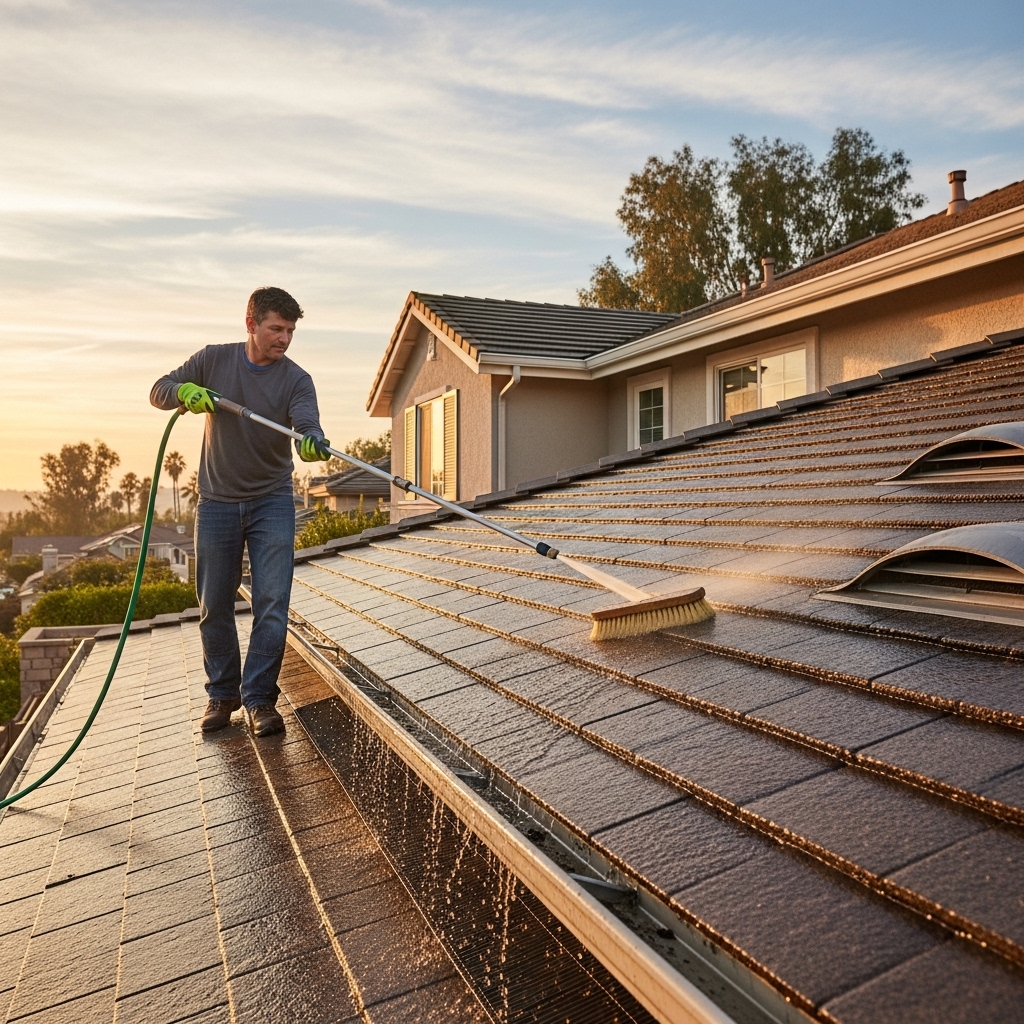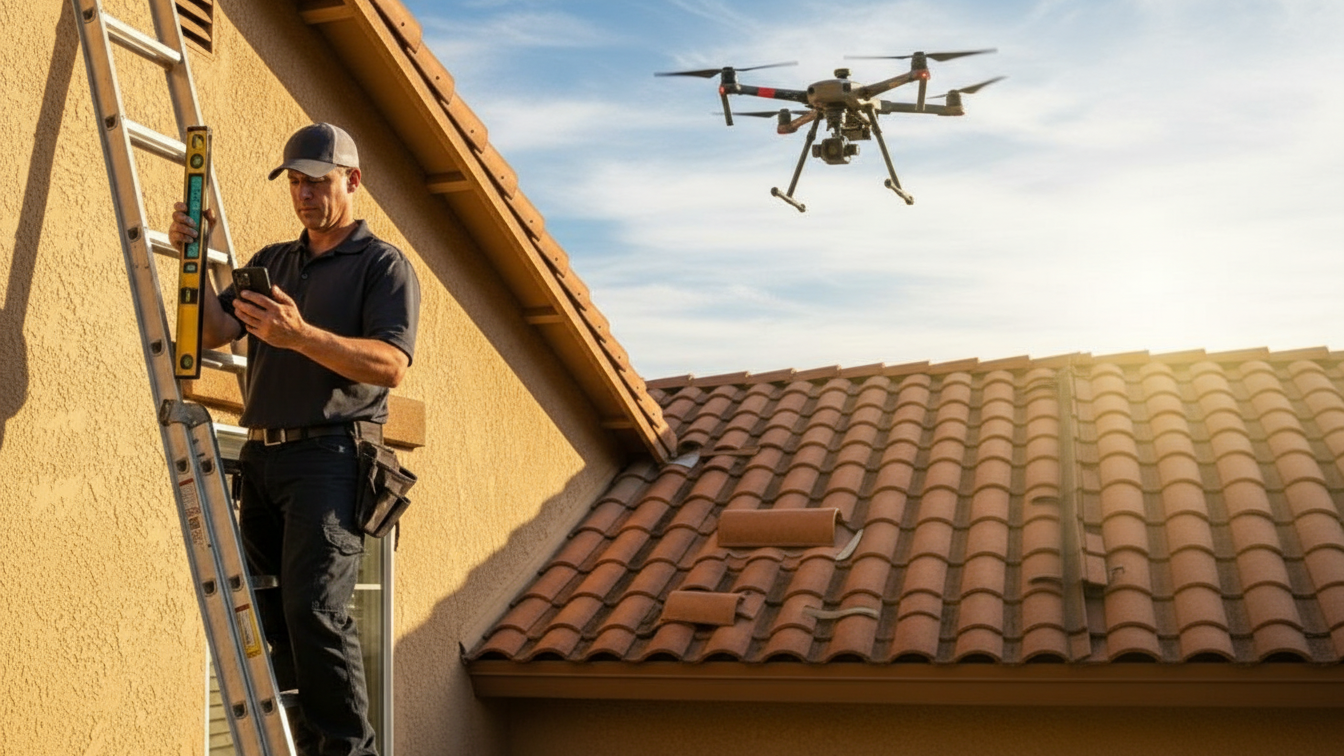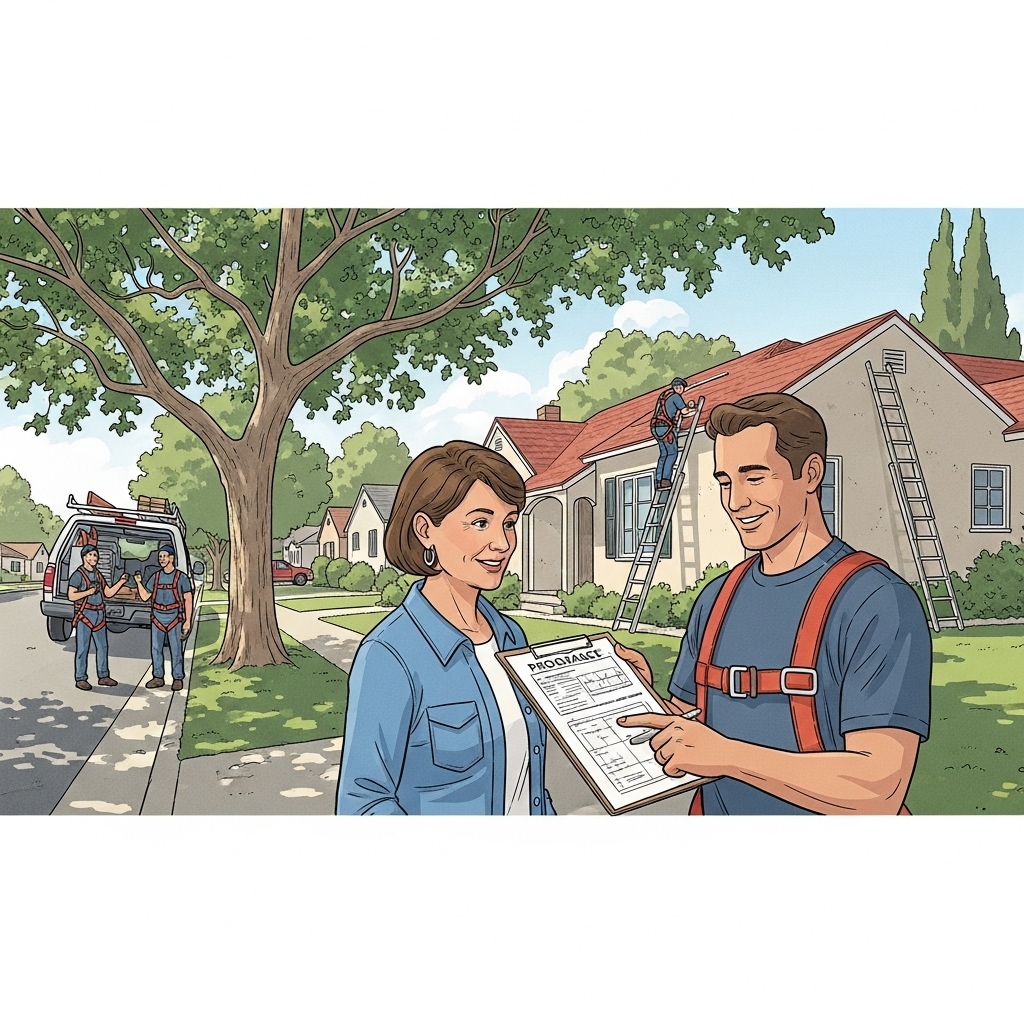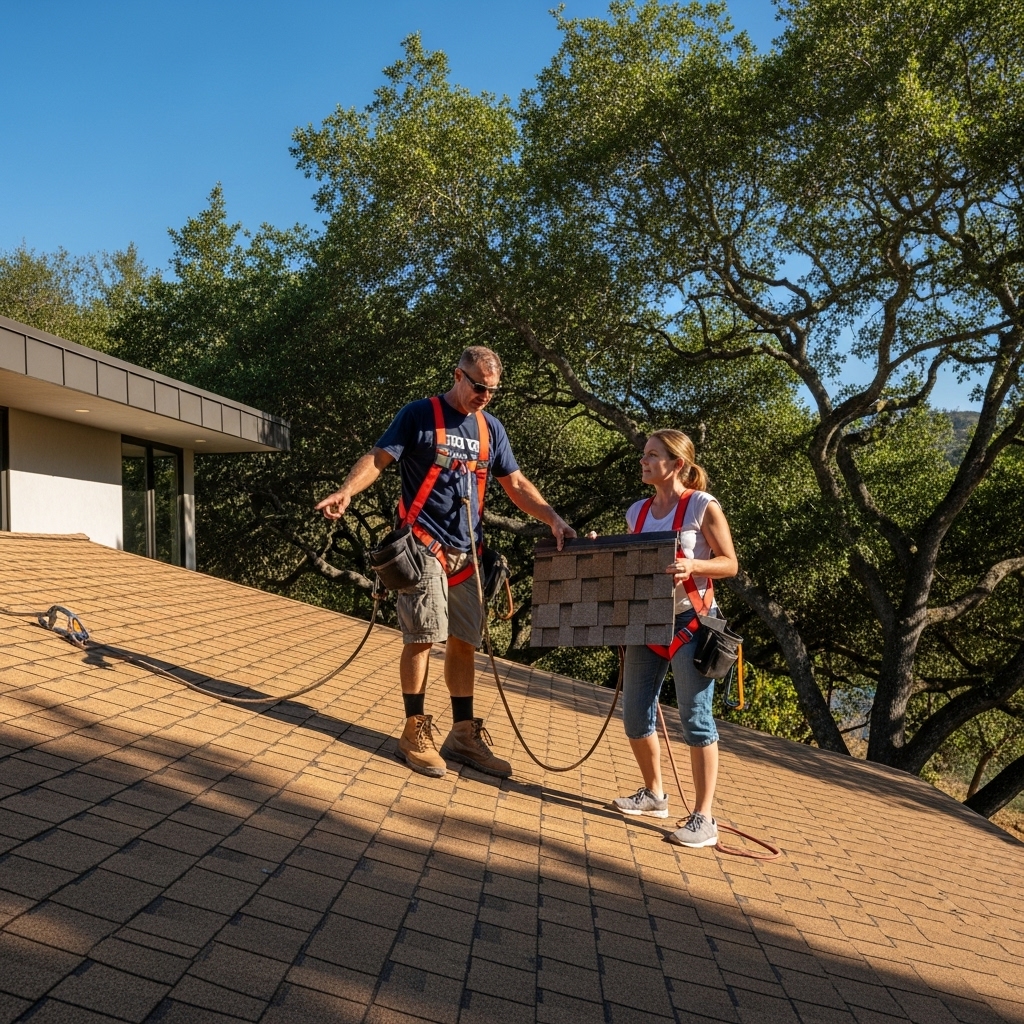In Tarzana, where long, bright summers roll into breezy shoulder seasons and the occasional storm sneaks across the Valley, a well-cared-for roof quietly protects everything beneath it. Homeowners choose metal roofing for its strength, energy performance, and fire resilience, but the real secret to decades of dependable service is a simple, consistent maintenance routine aligned with our local climate. You do not need specialized tools or long weekends to keep your roof in top form. What you need is awareness—of seasonal patterns, small signs that deserve attention, and the handful of tasks that sustain the system’s refined look and weather-ready performance.
As a local professional, I have seen that the best maintenance plans are calm and predictable. A few seasonal touchpoints, quick visual checks after windy days, and deliberate coordination with any rooftop solar go a long way. The payoff is a cooler, quieter home in summer, less debris clogging gutters when rains arrive, and the confidence that your roof is ready for whatever the Valley tosses your way.
Start With a Seasonal Rhythm
Tarzana’s seasons tell you when to act. Early spring is a good time to clear away the dust of winter and check how the roof handled cool nights and morning dew. Late summer—after dry months and just before the first fall winds—is ideal for a second look. These touchpoints bookend the hottest stretch of the year, when the roof’s reflective finishes and high-temperature underlayment worked hardest. In each check-in, look for the same simple things: clean drainage paths, tight flashings, and healthy finishes.
Most homeowners find that a gentle rinse is enough to remove dust and ash that settle on panels during dry weeks. Avoid aggressive pressure that can force water under laps or dislodge protective granules on stone-coated steel. Instead, use a soft spray and work from the ridge toward the eaves, guiding water along its natural path off the roof. The goal is not to scrub—it is to wash away fine particles that could hold moisture or stain finishes over time.
Gutters, Valleys, and the Art of Moving Water
Metal roofs are masters at shedding water, but the system only works as intended if path and pace are maintained. Gutters and downspouts need to be clear and firmly attached so water does not back up at the edge, where it can leave streaks or sneak behind trim. In valleys—especially where multiple slopes converge—leaves and needles collect after summer breezes. A quick clear-out lets the shaped metal beneath do its work without interruption.
Where roofs meet walls, make a habit of looking for clean, confident kick-out flashings. These quiet metal pieces are the unsung heroes of water management, steering runoff away from stucco or siding. If you notice streaks, damp patches, or staining on a wall below a roof-to-wall intersection, it is a sign to take a closer look or schedule an inspection. These are straightforward fixes when addressed early and the kind of detail that preserves the clean lines of a metal roof’s design.
Keep Trees Trimmed and Edges Clear
Tarzana’s leaf canopy is part of what makes our neighborhoods feel established and inviting, but branches that overhang a roof drop leaves and can brush against panels in the wind. That contact abrades finishes over time and traps debris in hidden corners. Trimming branches back from the roofline reduces leaf load and preserves the integrity of coatings that protect against UV and oxidation. It also keeps gutters from filling every few weeks during the height of the dry season, when even a small accumulation can block a downspout.
At roof edges, check that fascia and trim are in good condition and that screens or guards on gutters are seated properly. Where hilltop homes face concentrated gusts, hemmed eave edges and continuous cleats at gables do the quiet work of keeping panels locked down. A quick inspection of these perimeter details after notable wind reminds you that the assembly is still tight and tuned to Tarzana’s breezes.
Mind the Fasteners, Honor the Movement
Depending on your system, you may have exposed fasteners, concealed fasteners, or a mix. Exposed screws, common on certain profiles and accessories, should be checked periodically. Thermal cycles can compress washers or slowly loosen screws if they were not set just right. A simple, measured re-tightening keeps components snug and leak paths closed. If you are uncomfortable on the roof, binoculars from the ground or photos taken during a professional inspection can help you identify areas to address.
Metal expands and contracts with temperature swings. The design accounts for this, but the system needs to be allowed to move. Avoid applying rigid sealants where the manufacturer calls for slip details or flexible seals. If you hear occasional ticks or pops during rapid temperature changes, that can be normal; however, persistent or loud noises may point to panels pinned too tightly. This is a good conversation to have with a professional who can adjust clips or fasteners to restore smooth movement.
Solar: A Great Partner, With a Few Considerations
Many Tarzana homes pair metal roofs with solar panels—a smart match. To keep the partnership healthy, coordinate inspections so both systems are reviewed at the same time. On standing seam roofs, check that clamps remain properly torqued and that no sharp edges are biting into conductors. On stone-coated steel or other profiles that use penetrations, confirm that mounts are sealed with purpose-built flashings and high-temperature sealants that match the roof’s movement and heat exposure.
Wire management deserves more attention than it typically gets. Ensure conductors are securely anchored, do not rub against panel edges in the wind, and have clean, protected pathways to inverters or combiner boxes. A tidy solar installation is more than an aesthetic win; it prevents abrasion and noise while extending the service life of both roof and solar equipment.
Cleaning Techniques That Protect Finishes
Tarzana’s dry months leave a thin film of dust on almost any exterior surface. When it comes time to rinse your metal roof, think gentle and consistent. Use soft water flow, avoid harsh cleaners, and never use abrasive pads that can scuff finishes or lift granules on stone-coated profiles. If bird droppings or sap create stubborn spots, a mild, manufacturer-approved cleaner and a soft cloth can be enough. The aim is to preserve the integrity of the protective coatings that keep the roof cool and vibrant over years of sunshine.
Be mindful of runoff routes. Do not force water upward or sideways under laps or flashings; always guide it down the slope. Where patios, flat roofs, or gutters receive rinse water, ensure drains are clear so you are not simply moving debris from one choke point to another.
Watch the Transitions: Skylights, Chimneys, and Walls
Any point where the roof intersects another element deserves periodic attention. Skylights should sit on raised curbs with integrated flashing, and their gaskets and sealants should look even and intact. Chimneys require step and counter-flashing that ties cleanly into stucco or siding—if you see gaps, hairline cracks, or staining that seems to track from these areas, mark the spot and arrange a closer look.
At roof-to-wall transitions, kick-outs should project enough to throw water clear of the wall below. These are small parts with a large impact. If you are unsure what you are looking at, take photos and ask a professional to confirm that the details match your roof’s profile and manufacturer recommendations.
Ventilation and the Hidden Work of Air Movement
Efficient metal roofs and healthy attics go hand in hand. Check that soffit vents are unobstructed—insulation should not be pushed tight against openings—and that ridge vents are free of debris. Balanced intake and exhaust keep attic temperatures in check and allow any incidental moisture to move out of the assembly. In our climate, that balance also prevents excessive heat from accumulating under the deck, which preserves underlayment and keeps the home’s interior more comfortable on long sunny days.
For homes with vaulted ceilings, the assembly might be unvented by design, relying on continuous insulation above the deck. In those cases, visual inspections focus on exterior integrity: tight seams, clean flashings, and undisturbed finishes. The principle is the same—if the assembly is intact and designed for the local environment, it quietly handles the daily thermal cycle.
After Wind Events: Quick Checks That Pay Off
Santa Ana winds are part of Tarzana’s seasonal story. After a gusty day, a brief walk-around can alert you to issues early. Look for lifted edge trims, displaced gutter sections, or debris lodged in valleys. If you have standing seam, check that ridge caps remain even and that no seams appear twisted or stressed. On profiles with exposed fasteners, binoculared inspections can catch back-out early, when the remedy is small.
Inside the home, glance at ceilings in top-floor rooms and around skylights after storms. Even a faint stain is a signal to investigate. Addressing a small vulnerability now prevents a larger repair later and keeps the rest of the assembly undisturbed.
Wildfire Awareness: Ember Resistance and Clean Perimeters
Metal roofing is non-combustible, but the system still benefits from ember-aware details. Keep roof edges clear of leaf piles, and maintain ember-resistant venting at eaves and ridges. If vent screens have been damaged or displaced, replace them with components designed to resist ember intrusion. Check that the edges of the roof—where panels meet fascia or parapet caps—are tight and clean. These practices add up, increasing resilience during the driest weeks when winds are high and humidity is low.
Perimeter cleanliness also pays dividends in winter. Clear edges and gutters reduce staining and ensure that sudden, heavy downpours drain smoothly instead of backing up and leaving marks on fascia or walls. The same habits that protect against embers help manage rainwater the rest of the year.
Documentation and Small Repairs
Keep a simple record of your roof: installation date, product names and colors, and notes from seasonal checks. Photos at milestones are incredibly useful. If you ever add a vent, replace a skylight, or install solar, that documentation helps crews match components, finishes, and techniques. It also accelerates troubleshooting if an issue arises because everyone knows what lies beneath the panels.
When a small repair is needed, address it with profile-specific parts and methods. Improvised fixes often become tomorrow’s problem. Proper flashing, correct fasteners, and compatible sealants ensure your quick repair does not create a weak point elsewhere in the assembly.
The Middle Mile: Staying Ahead With Professional Eyes
Even if you are comfortable with basic upkeep, there is value in periodic professional inspections. A seasoned eye picks up on subtle shifts—an uneven ridge cap, a hairline crack at a step flashing, a fastener pattern that looks stressed in a high-movement area. Consider timing one of your seasonal check-ins with a professional review, especially if you are coordinating with solar service or planning other exterior work. Experienced metal roofing services can calibrate maintenance to your home’s roof shape, exposure, and materials.
Frequently Asked Questions
How often should I clean my metal roof in Tarzana? A light rinse two to three times a year is usually sufficient, with a little extra attention after windy weeks or if nearby construction dust settles on your home. Focus on keeping valleys and gutters clear so water moves freely.
Will rinsing harm the coating? Not if it is done gently. Use a soft, steady flow of water and mild, manufacturer-approved cleaners for stubborn spots. Avoid abrasive pads and high-pressure streams that can force water into laps or scuff finishes.
Do I need to retighten fasteners? If your system uses exposed fasteners, a seasonal check is smart. Adjust only as needed and avoid overtightening, which can damage washers. Concealed-fastener systems require less attention but still benefit from occasional reviews at trims and transitions.
How do I maintain a roof with solar panels? Coordinate inspections so the roof and solar are reviewed together. Confirm that racking clamps or mounts remain secure, flashings are intact, and wires are neatly routed and protected from abrasion.
Is rain noise an issue with metal roofs? With modern assemblies—solid deck, quality underlayment, and typical attic insulation—rain noise is usually comparable to other roof types. If you prefer a quieter experience, specialized underlayment can further dampen sound.
What should I look for after Santa Ana winds? From the ground, check edges for lifted trims, gutters for displacement, and valleys for lodged debris. Inside, glance at ceilings near skylights or upper corners for any staining. Early signs are easiest to address.
Can I walk on my roof to perform maintenance? It is best to let trained professionals handle roof access. If you must go up, choose cooler hours, wear soft-soled shoes, and step where panels are supported. Many tasks—like gutter checks—can be done safely from ladders.
Will tree sap or bird droppings damage the finish? If left for long periods, they can stain. Prompt, gentle cleaning with approved cleaners keeps finishes looking sharp. Regular rinsing also prevents buildup that can be harder to remove later.
How do I keep ventilation pathways clear? Ensure soffit vents are not blocked by insulation and that ridge vents remain unobstructed. Balanced intake and exhaust keep attic temperatures in check, which supports the roof’s energy performance and longevity.
Does maintenance differ for stone-coated steel versus standing seam? The fundamentals are the same—keep water paths open, inspect flashings, and be gentle with cleaning. Stone-coated profiles benefit from avoiding abrasive contact that can dislodge granules, while standing seam systems reward checks at seams and ridge caps.
With a light, steady approach to care, your Tarzana home’s roof will continue to look refined, run cool, and stand firm against the elements. If you are ready to set up an inspection plan, coordinate with solar service, or address a small item before it grows, reach out for a tailored review. Let’s map out maintenance that fits your schedule and keeps your home protected, starting with a conversation about metal roof installation and the long-view care that ensures it performs beautifully for years.






